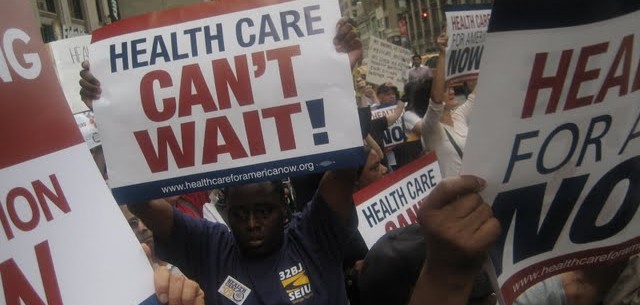Since the 2010 mid-term elections when control of the U.S. House of Representatives flipped from Democrats to tea party-dominated Republicans, Washington politicians have been engaged in an ongoing war over whether, when, and how best to reduce the annual federal budget deficit. Health care programs such as Medicare, Medicaid, the State Child Health Insurance Program (SCHIP), and the Affordable Care Act (ACA) sit squarely in the middle of the struggle given their combined significance in the overall budget.
In the various pieces of deficit reduction legislation enacted since over the past 3 years (the Budget Control Act of 2011, the American Taxpayer Reduction Act of 2012, and the FY 2014 and 2015 appropriations bills enacted this past January), these health care programs have been held relatively harmless. There have been some modest cuts in provider reimbursement rate in Medicare, and some diversions of ACA-related funding dedicated to new public health initiatives, long-term care insurance programs, and new non-profit “insurance co-ops” set-up in many states. (Ours here in New York is “Health Republic”.)
The general annual federal budget process begins when the president releases his proposals in late winter, followed by each house of Congress developing and adopting their own one-house resolutions in the early-mid spring, which are just spending and policy blueprints without details. Then a conference committee meets to develop an agreed-upon budget that each house then approves by late spring. A presidential signature is not required since it is just a guidance document for going forward in the process. Congressional leaders and administration officials then meet over the summer to hammer out specific appropriations bills based on their proposals. Their final agreement then goes to Congress for adoption by Oct. 1st, when the federal government’s new fiscal year begins.
In his budget for the coming FY 2015, President Obama has left Medicaid, SCHIP, and the ACA largely as is, with no significant changes. His proposals for Medicare are to reduce spending by $400B over a 10-year period through the following major initiatives:
- Reductions in payments for prescription drugs ($136B), most of which would result from raising rebates for drugs provided to low-income people on Medicare ($116B).
- Reductions in payments to providers ($132B), most of which would result from post-acute care services ($104B).
- Increases in premiums, deductibles, and co-pays for upper-income beneficiaries ($64B)
- Reductions in subsidies to private insurers who participate in the “Medicare Advantage” program ($32B)
- Lowering the overall target annual growth rate for Medicare from GDP+1% to GDP+0.5% ($12B)
The President also proposed to end ongoing sequester cuts to Medicare. Overall, his proposals mirror those he’s put out in previous years.
In early April, before recessing for the Easter-Passover break, the House of Representatives adopted its own budget, with the following health care provisions:
- Repeal of the ACA, including ending funding for: 1) state Medicaid expansions; 2) premium subsidies for private plans; 3) closing the Medicare Part D coverage gap (“donut hole”); and 4) Medicare preventive services.
- Transforming Medicaid from an entitlement program that grows to meet demand into a flat block grant to states, with weaker federal rules and oversight.
- Folding SCHIP into Medicaid while ending SCHIP funding per se.
- Reduction in Medicaid spending by 26% over the next 10 years ($1.5TR).
- Transforming Medicare into a flat-rate voucher program to buy into either private insurance plan or Traditional Medicare. It would start in 2024 for new beneficiaries, and the vouchers would be indexed to the general inflation rate (instead of medical inflation, which is typically 2-3 times higher.)
- Raise the Medicare eligibility age from 65 to 67 over a 10-year period, starting in 2024.
- Raising premiums for upper-income beneficiaries starting in 2019, and lower the income thresholds that trigger such them over time.
- Sequester cuts to Medicare remain in force through 2024.
The Senate leadership has indicated they will not be developing a budget proposal this year in lieu of the budget and appropriations bills enacted in January. Accordingly, both the President’s budget and House budget are mainly seen as campaign manifestos for this fall’s mid-term Congressional elections, and neither differ much from recent years. Not much activity is expected in the budget process from here forward until at least the late fall. Therefore, the next meaningful budget fight likely won’t start up until a year from now when efforts to craft a budget for FY 2016 gets underway.
The outcomes of the upcoming elections will determine who gets to put what on the table then, and what ideas (good or bad) move forward. If “pro-health care” candidates prevail, the Affordable Care Act and its provisions improving Medicare and Medicaid will proceed, and SCHIP will continue as is.
Reference sources: Center on Budget and Policy Priorities, Families USA, Kaiser Family Foundation

